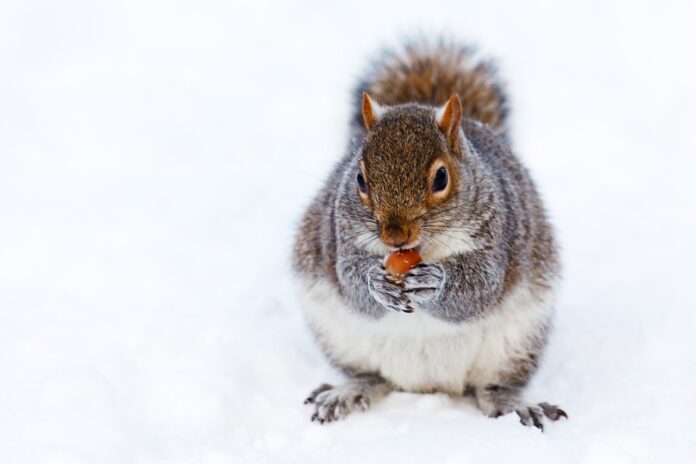For the past couple of years here in Ohio, the winters have been a bit on the milder side, as far as northeast Ohio weather standards go. We’ve been warmer into December and have had some spotty warm spells throughout the typically brutal chill of January and February.
I remember as a kid, we would have snow on the ground from Thanksgiving to at least Valentine’s Day. This year specifically, we’ve been hard-pressed to get a decent coating of snow to last more than four days.
It’s been fairly wet with a lot of precipitation in the form of rain as opposed to large white snowflakes that some of us really enjoy, but many of us despise. We’ve had some unseasonably warmer days that kept the snow at bay when we were hoping for snow-covered ground on Christmas morning.
Although some of our weather patterns are shifting slightly, we still find ourselves having to adjust to the weather once November rolls around. We have no hesitation when the temperature gets down into the 30s to pull out the extra blanket for the bed, put another log on the fire or adjust the thermostat and get out the winter coats and hats. While we have the luxury to seek shelter and have the proper amenities to keep our hides from freezing off, some wildlife species have different approaches for how to tough out the harsh winter weather.
Wildlife here in Ohio generally has three options when winter rears itself to our woodland critters. They can migrate, hibernate or tolerate.
Migration
Migration is one of the more commonly known avenues for animals to take to combat the winter cold, more often observed and understood in our bird populations. Many of the bird species that we see here in Ohio during the spring and fall are not generally resident birds. Songbirds such as warblers and flycatchers, among hundreds of other species, migrate through Ohio in search of better weather and abundant food resources.
Many of our waterfowl species like ducks and geese can travel hundreds of miles in just a few hours to seek out food for the winter months prior to returning north in the spring to their breeding grounds. Northwest Ohio is one of the best places to get a glimpse of these birds making the big push to more suitable climates each spring and fall.
Birds aren’t the only ones who migrate across our landscape. Some amphibian species and reptile species migrate once they shake the cobwebs from their chilly winter hideout. Although a Jefferson salamander’s migration of a quarter mile may not be as impressive as an American Widgeon’s migration of 1,500 miles from the prairie pothole region of North Dakota down to the coastal marshes of Louisiana, they both are pivotal for their existence.
Hibernation
Hibernation is a term used to describe an animal’s prolonged stage of dormancy, usually during the winter months. While hibernation seems to be a well-used and familiar term to describe how a bear spends its time away from the blistering cold from December through March, there are different degrees of this hibernation-like trance for different animals.
Hibernation is the voluntary act of overwintering in an isolated area. During hibernation, an animal will lower its heart rate and metabolism to conserve energy. Prior to going into hibernation, they stock up their bodies’ fat reserves to last throughout the winter without having to emerge from the area they are hibernating. There are only three mammals in the state of Ohio that are true hibernators. They are jumping mice, groundhogs and little brown bats.
Though we have few true hibernators, some species enter a sleep stage that might be shorter and a less exaggerated form of hibernation called “torpor” or “temporary hibernation.” This sleep stage can be as little as a few hours to as long as a few weeks. Generally, the driving force for the length of an animal’s torpor will be the temperature outside and the amount of food available to that animal. Often, an animal in a state of torpor will wake up for a short time to eat and drink.
Turtles undergo a similar process called “brumation.” Being cold-blooded, they are more susceptible to the cold weather outside. In order to combat the frigid temperatures, they burrow themselves into soft muck in the bottom of a water body for the winter. As the days get shorter and the temperatures drop, turtles will slow down on eating and find place to burrow underwater which will stay above 32 degrees. Turtles will absorb the little bit of dissolved oxygen in the water through their exposed skin on their head, legs and tail. With their heart rate slowed down to a few beats every couple of minutes, they don’t require much oxygen to maintain their dormant stage.
Tolerate
Many of the animals that we see out and about during the winter don’t have the ability to hibernate or migrate. Instead, they’ve adapted various traits that enable them to withstand the harsh weather conditions of winter.
White-tailed deer go through different coat phases with their hair depending on the season. In the winter, they grow thicker coats with guard hairs that are hollow to trap the body heat and keep them warmer. Some other species, such as squirrels, spend the majority of the fall months collecting nuts and seeds to last them through the winter. Eastern wild turkeys have a thick mat of feathers on their body to keep them warm and their blood circulates fast enough to not allow the exposed skin of the feet to get cold.
These wintertime behaviors leave me questioning how some of these animal species will adapt further depending on our weather cycles moving forward. I find it fascinating that a stretch of abnormally mild winters or a stretch of extreme weather during a migration season could be all it takes to spark an adjustment in the natural world’s behaviors.













